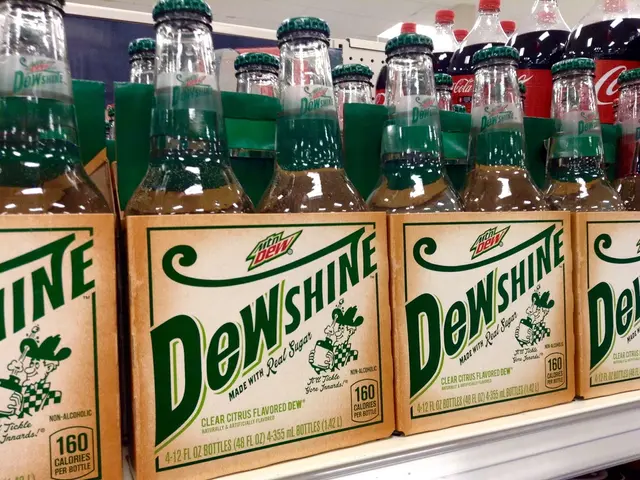Distinguishing Age Spots from Skin Cancer: Recognizing the Variances
Hey there! Let's talk about age spots and skin cancer, shall we?
Age spots and skin cancer can pop up on your skin and might resemble each other at first glance. However, age spots are completely harmless and have no need for treatment or removal, while skin cancer poses a significant health risk if left untreated.
Age Spots
Age spots, also known as solar lentigines or liver spots, are small patches that appear darker than your surrounding skin. They're usually flat and smooth, with no itching or crusty sensations. Age spots spring up due to your body overproducing melanin to shield the skin from excessive sun exposure. These spots are most common on fair skin but can appear on any skin tone. Typically, age spots start making an appearance from middle age onward.
Skin Cancer
Skin cancer is a form of cancer that can develop on skin areas frequently exposed to the sun. The culprit is usually UV radiation from the sun or tanning beds. Skin cancer occurs when UV radiation or other factors (like genetics) damage skin cells, causing them to grow and spread at an accelerated rate. Unlike age spots, skin cancer is hazardous, and the growth can spread to other parts of the body.
The three most common types of skin cancer are basal cell carcinoma, squamous cell carcinoma, and melanoma. Another issue that can be mistaken for an age spot is actinic keratosis, a precancerous growth caused by UV damage. And if left untreated, actinic keratosis could potentially escalate into skin cancer.
Now, it's essential to keep watch over any new or changing marks on your skin, and if you notice any warning signs of skin cancer, reach out to a healthcare professional. Identifying skin cancer early can make it easier to tackle, improving your overall health.
Comparing Symptoms
Spotting the differences in symptoms between age spots and skin cancer can help identify which condition you might be dealing with.
Age Spot Symptoms:- Flat- Smooth- Yellow, brown, or grey- Sharp borders- Various sizes (from a few millimeters to centimeters)- Likely to appear on sun-exposed areas, such as the face, hands, shoulders, feet, arms, and back
Skin Cancer Symptoms:- Asymmetrical shape- Irregular, blurred, or ragged edges- Changing size, color, or shape- Multiple colors (pink, blue, purple, black, brown)- Raised, red patches- Pale or yellow firm patches (similar to scars)- Itching, oozing, or bleeding- Crusty or scaly patches- Raised edges that lower in the middle
By understanding the differences in appearance and symptoms, you can better assess your skin and know when to consult a medical expert. Don't forget to monitor any new marks and reach out to a doctor if you notice any possible signs of skin cancer.
So, there you have it! Now you're a bit more knowledgeable about age spots, skin cancer, and actinic keratosis. Remember, keeping an eye on your skin and seeking professional advice when necessary can significantly improve your overall health. Stay radiant, my friend!
- Age spots, often referred to as solar lentigines or liver spots, occur due to an overproduction of melanin from excessive sun exposure and are generally flat, smooth, and don't pose any health risks.
- Skin cancer, on the other hand, is a potentially hazardous medical condition that can develop from UV radiation damage or genetic factors, and it typically appears with asymmetrical shapes, irregular edges, multiple colors, and symptoms like itching, oozing, or bleeding.
- The three common types of skin cancer include basal cell carcinoma, squamous cell carcinoma, and melanoma, while actinic keratosis, another precancerous growth, can be mistaken for age spots and could escalate to skin cancer if left untreated.
- It's crucial for seniors and people of all skin tones to be aware of any new or changing marks on their skin, as identifying skin cancer early can significantly improve one's health and wellness.
- In dermatology, science, and health-and-wellness discussions, a key focus is making sure that individuals are educated about skin care, skin conditions, and the importance of seeking medical help if they suspect any form of skin cancer or actinic keratosis.








